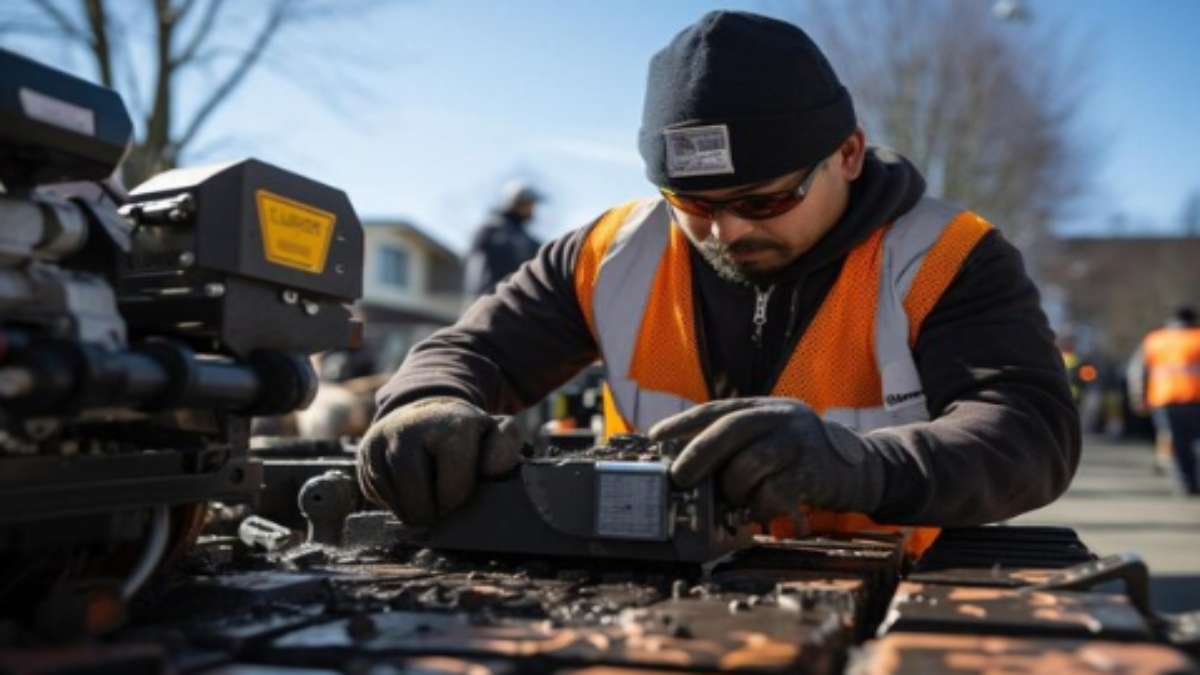Introduction: What Is Precise Paving?
Precise paving refers to the meticulous process of installing paving materials—such as concrete, brick, or stone—on driveways, walkways, or patios with accuracy and attention to detail. This approach ensures a durable, aesthetically pleasing surface that can withstand the test of time and traffic.The Stauffer Home – Home Blog
For homeowners, DIY enthusiasts, and renovators, mastering the art of precise paving can lead to significant cost savings and a professional-looking finish. This guide provides step-by-step instructions to help you achieve a flawless paving project.
Table of Contents
Planning Your Paving Project
Before you begin, it’s crucial to plan your project thoroughly. Consider the following:
-
Purpose: Determine the primary function of the paved area (e.g., driveway, walkway, patio).
-
Design: Choose a pattern and layout that complements your home’s style.
-
Materials: Select appropriate paving materials based on durability, aesthetics, and budget.
-
Budget: Estimate costs for materials, tools, and any professional assistance.
-
Permits: Check local regulations to see if a permit is required for your project.
Gathering Necessary Tools and Materials
To ensure a smooth installation process, gather the following tools and materials:
Tools
-
Measuring tape
-
Stakes and string
-
Shovel and rake
-
Plate compactor or hand tamper
-
Rubber mallet
-
Level
-
Masonry saw or paver splitter
-
BroomThe Spruce+16sspavers.com+16The Stauffer Home – Home Blog+16JCB DesignscapesWestern Interlock+1JCB Designscapes+1Driveline Paving LTD+7Left Coast Pavers+7This Old House+7The Spruce+11Driveline Paving LTD+11The Stauffer Home – Home Blog+11This Old House+1Left Coast Pavers+1
Materials
-
Paving stones (concrete, brick, or stone)
-
Geotextile fabric
-
Crushed stone or gravel (sub-base)
-
Sand (bedding and joint)
-
Edge restraints
-
Polymeric sand (optional)This Old House+2Left Coast Pavers+2sspavers.com+2sspavers.com+1The Stauffer Home – Home Blog+1
Preparing the Site
Proper site preparation is essential for a long-lasting paved surface.
-
Mark the Area: Use stakes and string to outline the perimeter of the project.
-
Excavate the Area: Dig down to a depth of 6–8 inches, removing any existing grass, debris, or soft soil.
-
Install Geotextile Fabric: Lay fabric over the excavated area to prevent weed growth and soil mixing.
-
Compact the Soil: Use a plate compactor to compact the soil, ensuring a stable base.Western Interlock+5JCB Designscapes+5Dube Property Maintenance & Hardscaping+5Left Coast PaversThis Old House+1Left Coast Pavers+1
Laying the Base Layer
A solid base is crucial for the longevity of your paving.
-
Add Sub-Base Material: Spread a 4–6 inch layer of crushed stone or gravel over the prepared area.
-
Compact the Sub-Base: Use the plate compactor to compact the sub-base thoroughly.
-
Add Bedding Sand: Spread a 1-inch layer of sand over the compacted sub-base.
-
Level the Sand: Use a screed board to level the sand, ensuring a smooth surface for the pavers.westyorkpaving.com+6This Old House+6sspavers.com+6This Old House+6Dube Property Maintenance & Hardscaping+6Left Coast Pavers+6sspavers.com+4Left Coast Pavers+4This Old House+4
Installing the Pavers
Now it’s time to lay the pavers.
-
Start at a Corner: Begin laying pavers at one corner of the area, working your way across.
-
Lay Pavers Tightly: Place pavers close together, using a rubber mallet to tap them into place.
-
Cut Pavers as Needed: Use a masonry saw or paver splitter to cut pavers to fit edges and corners.
-
Check Alignment: Regularly check the alignment and level of the pavers to maintain a consistent pattern.sspavers.comLeft Coast Pavers+1sspavers.com+1This Old House+1Left Coast Pavers+1
Finishing Touches
Complete your project with these final steps.
-
Install Edge Restraints: Place edge restraints around the perimeter to prevent paver movement.
-
Fill Joints with Sand: Spread polymeric sand over the pavers and sweep it into the joints.
-
Compact the Surface: Use the plate compactor to settle the pavers and sand into place.
-
Clean the Surface: Sweep off any excess sand and clean the surface of the pavers.sspavers.com+1The Stauffer Home – Home Blog+1Left Coast Pavers+1This Old House+1
Maintenance Tips
To keep your paved area looking its best:
-
Regular Cleaning: Sweep the surface regularly to remove debris.
-
Seal the Pavers: Apply a sealant to protect the pavers from stains and weathering.
-
Weed Control: Use weed killers or pull weeds by hand to prevent growth between pavers.
-
Repair Damage Promptly: Replace any damaged pavers to maintain the integrity of the surface.Zillow
Conclusion
Achieving precise paving requires careful planning, the right materials, and attention to detail. By following this guide, you can create a durable and attractive paved surface that enhances the functionality and appearance of your property. Whether you’re a seasoned DIYer or a first-time renovator, the steps outlined here will help you achieve professional results.

